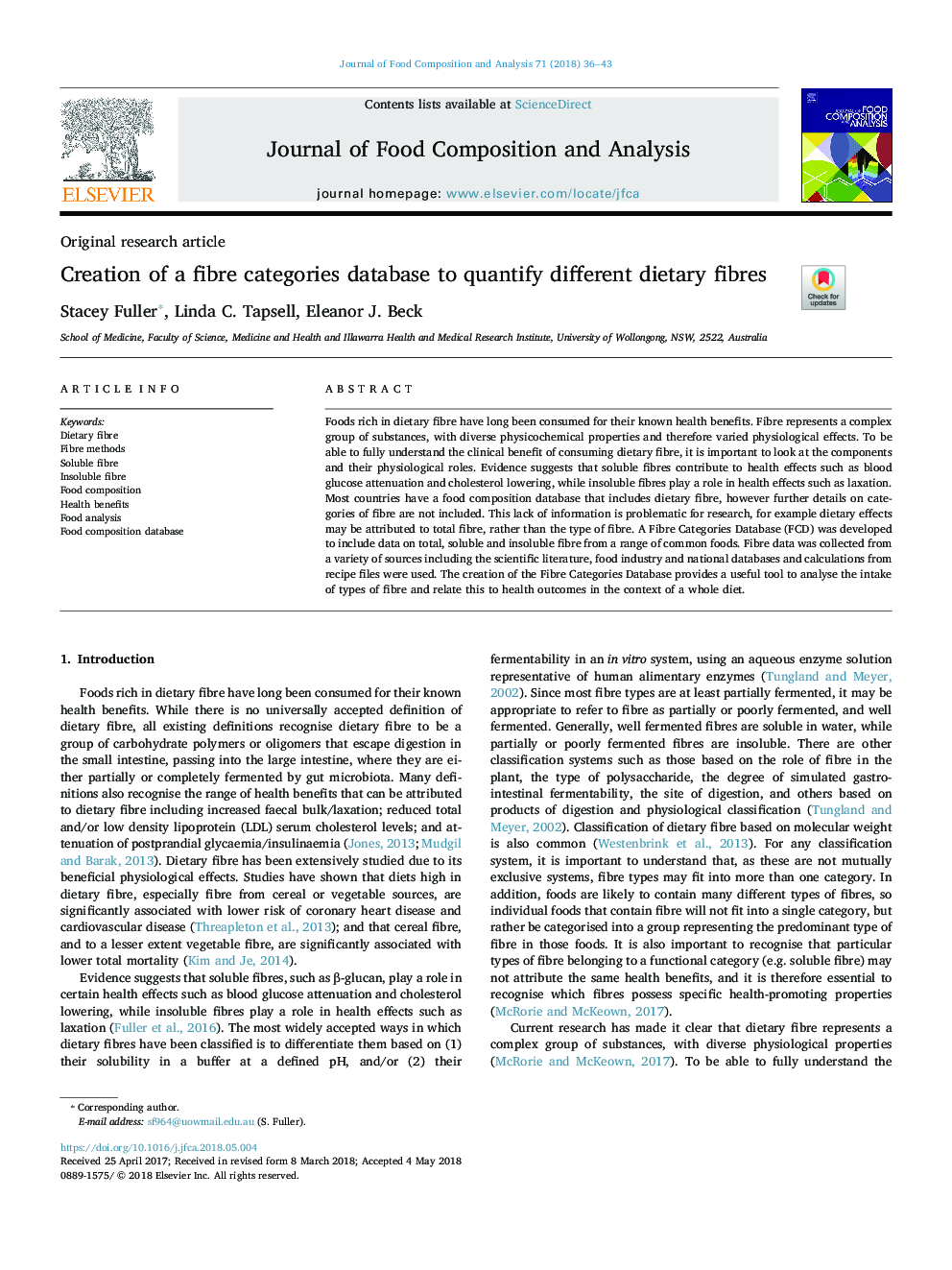| Article ID | Journal | Published Year | Pages | File Type |
|---|---|---|---|---|
| 7619551 | Journal of Food Composition and Analysis | 2018 | 8 Pages |
Abstract
Foods rich in dietary fibre have long been consumed for their known health benefits. Fibre represents a complex group of substances, with diverse physicochemical properties and therefore varied physiological effects. To be able to fully understand the clinical benefit of consuming dietary fibre, it is important to look at the components and their physiological roles. Evidence suggests that soluble fibres contribute to health effects such as blood glucose attenuation and cholesterol lowering, while insoluble fibres play a role in health effects such as laxation. Most countries have a food composition database that includes dietary fibre, however further details on categories of fibre are not included. This lack of information is problematic for research, for example dietary effects may be attributed to total fibre, rather than the type of fibre. A Fibre Categories Database (FCD) was developed to include data on total, soluble and insoluble fibre from a range of common foods. Fibre data was collected from a variety of sources including the scientific literature, food industry and national databases and calculations from recipe files were used. The creation of the Fibre Categories Database provides a useful tool to analyse the intake of types of fibre and relate this to health outcomes in the context of a whole diet.
Keywords
Related Topics
Physical Sciences and Engineering
Chemistry
Analytical Chemistry
Authors
Stacey Fuller, Linda C. Tapsell, Eleanor J. Beck,
